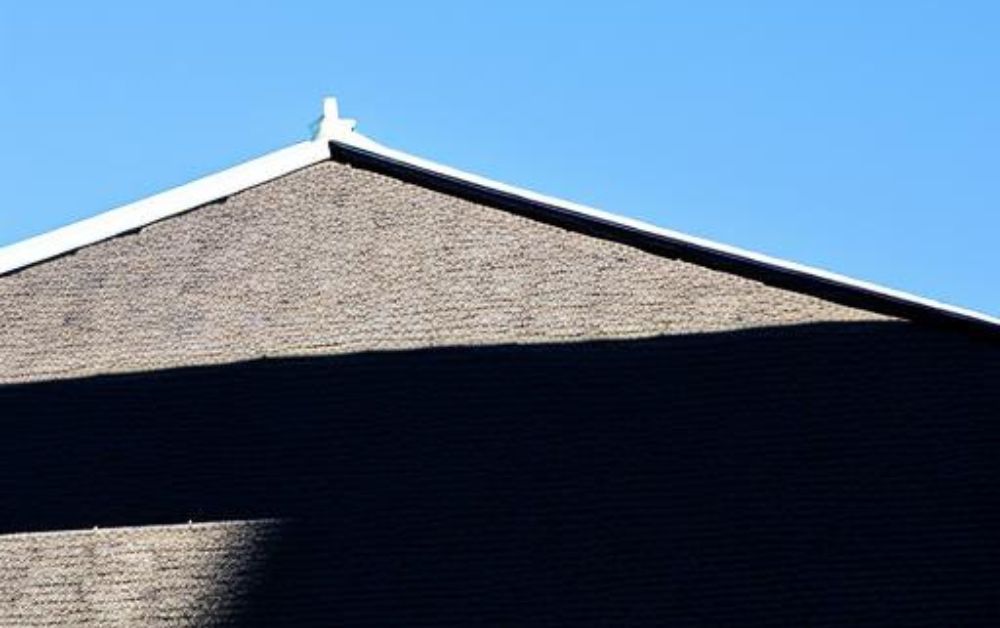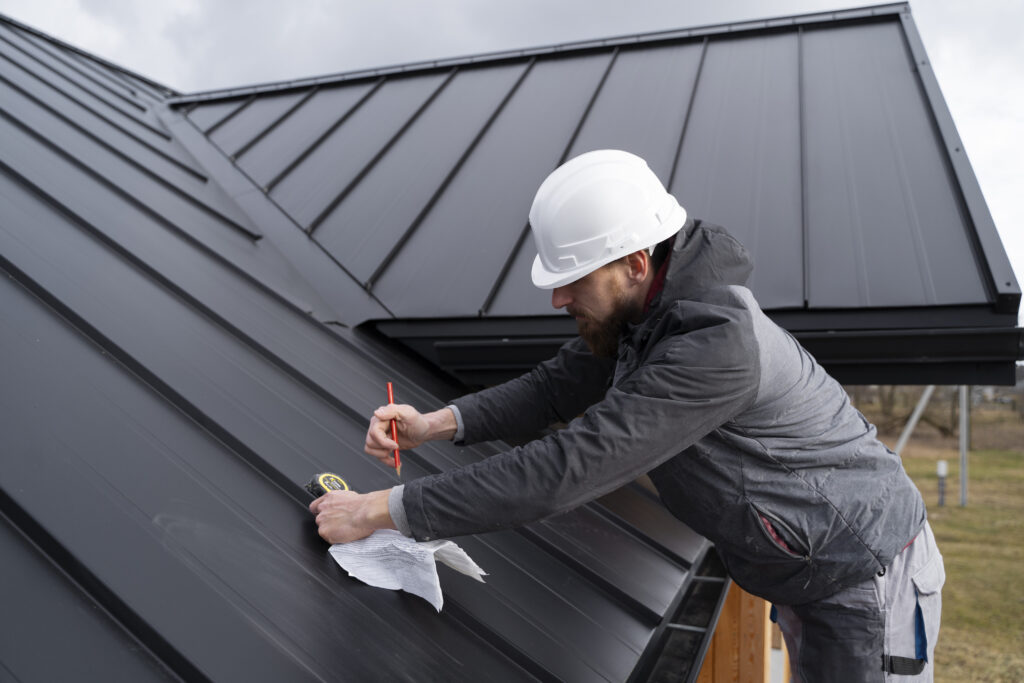
Yes, Texas heat waves and hot weather can damage your roof. Heat and UV exposure go hand in hand. UV rays discolor and blow up most roofing materials. You might see your roof change color and weaken if you’re in this situation.
So what measures can you take to prevent your roof from Texas heat damage?
Look at the article to find out how to keep your roof safe before summer. But before that, you have to understand how heat damages your roof.
The effects of Texas heat on your roof
Your roof is an essential part of your building because it costs so much.
According to a study named “Extreme heat belt”, more Texans will suffer from extremely hot weather within the next four decades.

There are lots of roofing options, each with a different lifespan. For example, if you live near Dallas or Fort Worth, all roofing materials have the same rules.
Dallas heat may damage your roof, so you need to be aware of how it affects it. Knowing how Texas heat wave affects your roof can help you identify warning signs and protect it better.
It’s nice to have the chill of winter gone, but summer’s not perfect either. Heat and sun can cause issues as bad as or worse than those you deal with in the winter.
At different temperatures, heat affects the roof’s condition in a variety of ways. Some of the most significant consequences are described below.
1. UV radiation may reduce a roof’s life
You and your indoor space are protected from direct sunlight by your roof. As your roof gets exposed to the sun and the UV rays it contains, it may start to deteriorate. In the long run, UV rays can damage roofing materials.
Roofs age from UV rays and direct sun glare all year long. It doesn’t matter if it’s summer, winter, or any other season. What differs is the amount of solar radiation.
The summer season comes with more solar intensity. This increases the impact of Texas heat and UV radiation on roofs. Continuous UV exposure can ruin your roof.
A compromised roof can crack, loosen shingles, and have other aging symptoms.
Read also: Roof Replacement in Texas
2. Heating Shock
When it’s hot outside, your roof gets warm. Your question is, “How hot is it?”
Roofs with normal or dark colors can get hotter inside than outside, reaching 50 °F. The temperature of your roof should be at least 148 °F. That’s hot enough to scramble an egg on your roof!
Warm weather expands your roof’s materials. As soon as the sun sets and the temperature drops, the materials shrink. Changing temperatures can be tough on your roof.
When temperatures change, it causes tension called “thermal shock.” The durability of roofs goes down as they age. Thermal shock can speed up the aging of a roof.
Expanding and contracting can cause permanent damage to older roofs. When it gets hot, a roof can split or fracture.
3. Mold and moss grow in a humid environment
You’re hampered by moss and mold growing on your roof when it’s damp. Because they feed on your roof’s strength, they can damage it. Hiring roof cleaners or contacting a roofing company right away is the best way to deal with mold and moss.
You can contact us to book a free roofing consultation. We know well how to protect your roof from Texas heat waves.
4. Roof’s color deteriorates in direct sunshine

Your roof’s color adds to the aesthetic appeal of your building. In contrast, heat and sunlight can destroy it.
It’s not just the color that fades.
The quality of the roofing material is also compromised.
5. High Texas Heat Causes Water Damage
We call it “humidity” when there’s moisture and water vapor in the air.The more frequently water evaporates, the higher the humidity in a region. There may be moisture between your roof shingles. This could harm your roof.
Later, this can cause roof damage and leaks.
6. Seasonal Storms
Summer thunderstorms can cause extreme wind damage to your roof. There’s a possibility that the tiles will come loose due to heat waves in Texas. It’s a good idea to check your roof after a big storm.
Check the eaves for blocked gutters, wet spots, or missing or broken shingles. Take a walk in your attic on a sunny day. If you see sunlight in your attic, it’s a sure sign that your roof is damaged.
Don’t forget that most damage won’t show up right away. They can develop over a few weeks or months. By keeping an eye on what’s going on under your roof. You can catch problems before they become emergencies.If your roof is under ten years old and well-maintained, you shouldn’t be worried.
Ideally, any roof older than that should be inspected and repaired right away.
Read also: 9 Things to consider before purchasing and installing solar panels in Texas
How to prevent roofs from Texas heat wave

Once you know how Texas summer heat can be harmful to your roof. You must be wondering how you can protect it.
Preventing heat damage will extend the life of your roof and save you money on repairs. It’s critical to be mindful of how to lessen the effects of the Texas heat on your roof. Here are some actions we recommend.
1. Ventilation on the roof
You can’t overestimate how helpful roof ventilation is in reducing heat damage. Your local roofer can help you reduce heat retention and increase air circulation.
2. Perform regular maintenance
Regular roof maintenance is crucial. Get rid of debris from your roof and fix cracked or broken shingles and flashing during the summer.
If you neglect your roof, it will deteriorate more. Keeping it clean and maintaining it will make it last longer. High temperatures can cause roof materials to change if it’s sunny.
3. Remove the direct sun
It’s possible to shield your roof from direct sunlight. You can easily shade your backyard thanks to the nearby big trees. Or you can put solar panels on your roof if there aren’t any trees to reduce the direct sun’s impact.
4. Light colors are better for roofing
The majority of roofing materials come in a variety of hues. When it comes to Dallas roofing, light-colored materials will help reduce the impact of the sun and heat.
Lighter colors reflect heat less, so they fade less and expand less.
5. Choose a heat-resistant material
Some roofing materials work well when it comes to Texas heat, but others don’t.
Clay tiles, for example, can handle 120-degree temperatures, like those in Texas and Arizona recently. In contrast, the 120-degree heat wave will reduce the lifespan of asphalt shingles.
6. Insulate roof from Texas heat
A lot of people think insulation means bitterly cold winters. In Texas, insulation can also be helpful in protecting your roof against heatwavese. You can stop warm air from getting into your house by installing summer roofing and insulated decking.
7. Higher-pitch roofs
Low-sloped houses have their roofs exposed to the sun. Because your roof is exposed to the sun constantly, it ages quickly. Therefore, your roof’s lifespan is reduced, and it might even suffer heat damage.
For this, a roof with a steeper slope is a better choice. On your current property, you can’t change the slope of the roof. This is something to keep in mind if you ever buy a house.
8. Concrete tile and slab roofs
You can replace terracotta with concrete if you like the thermal properties but not the cost. In the sun, this material takes longer to warm up, so it takes longer to absorb heat. Concrete slab is lightweight and affordable for hot-weather roofs.
9. Living roofs or green roofs
Green roofs seem like something out of The Hobbit. They actually offer lots of benefits. Texas green roofs reduce heat loss and heat absorption. They’re plants suspended over a waterproof membrane.
Hot-weather homeowners are getting in on the idea. Any material will work when it comes to keeping your home cool!
Read also: Should you replace or repair your roof?
Ready to Protect Your Roof From Texas Heat?
If you are the one, dealing with the scorching Texas heat, it’s crucial to get a cool roof. Seeking assistance from a professional roofer is recommended. To prevent hot roof problems, regular roof maintenance is essential. You can call us if you want a dependable roofing company. Or book our free roofing consultation service to get the best advice for your roof. Click here







